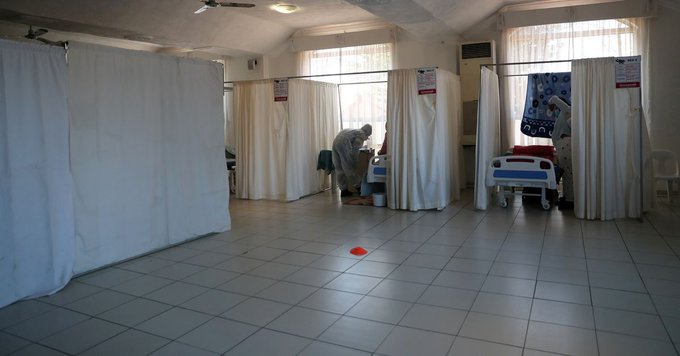Health
Top things to know about the newly identified COVID-19 variant “Omicron”

The World Health Organization has designated a newly identified COVID-19 variant as a variant of concern (VOC), the organization announced Friday.
The B.1.1.529 variant, now officially called “Omicron” according to the WHO naming system, was first reported by South Africa on Nov. 24, the group said in a press release. The first known infection with the variant was from a specimen collected on Nov. 9.
“This variant has a large number of mutations, some of which are concerning,” the organization wrote.
“Preliminary evidence suggests an increased risk of reinfection with this variant, as compared to other VOCs. The number of cases of this variant appears to be increasing in almost all provinces in South Africa.”
A “variant of concern” typically has characteristics like increased transmissibility, disease severity or immune escape – meaning that immunity granted through vaccination or previous infection with COVID-19 is likely to be weaker against such a variant, the WHO said.
Sharon Peacock, who has led genetic sequencing of COVID-19 in Britain at the University of Cambridge, said the data so far suggest the new variant has mutations “consistent with enhanced transmissibility,” but said that “the significance of many of the mutations is still not known.”
She said it would take several weeks to do the necessary lab tests to determine if current coronavirus vaccines are still effective against the new variant.
WHERE AND WHEN WAS NEW VARIANT FOUND?
South African scientists detected a small number of the variant known as B.1.1.529 on Tuesday in samples taken from Nov. 14 to Nov. 16.
On Wednesday, South African scientists sequenced more genomes, informed the government that they were concerned and asked the World Health Organization (WHO) to convene its technical working group on virus evolution for Friday.
The country has identified about 100 cases of the variant, mostly from its most populated province, Gauteng, where Johannesburg and Pretoria are located.
WHY IS IT WORRYING SCIENTISTS?
All viruses – including SARS-CoV-2, the virus that causes COVID-19 – change over time. Most changes have little or no impact on their properties.
However, some changes may affect how easily they spread, their severity, or the performance of vaccines against them.
This variant has drawn particular scrutiny because it has more than 30 mutations of the spike protein that viruses use to get into human cells, UK health officials say.
That’s about double the number of the Delta variant and makes it substantially different from the original coronavirus that current COVID vaccines were designed to counteract.
South African scientists say some of the mutations are associated with resistance to neutralising antibodies and enhanced transmissibility, but others were not well understood, so its full significance is not yet clear.
UK Health Security Agency Chief Medical Advisor Susan Hopkins told BBC radio that some mutations had not been seen before so it was not known how they would interact with other ones, making it the most complex variant seen to date.
So more tests will be needed to confirm if it’s more transmissible, infectious or can evade vaccines.
The work will take a few weeks, the WHO’s technical lead on COVID-19, Maria van Kerkhove, said on Thursday. In the meantime, vaccines remain a critical tool to contain the virus.
No unusual symptoms have been reported following infection with the B.1.1.529 variant and, as with other variants, some individuals are asymptomatic, South Africa’s National Institute for Communicable Diseases (NICD) said.
WHERE ELSE HAS THE VARIANT BEEN DETECTED?
South African scientists say early signs from diagnostic laboratories suggest it has spread rapidly in Gauteng and may already be present in the country’s other eight provinces.
South Africa’s daily infections nearly doubled on Thursday to 2,465. The NICD did not attribute the resurgence to the new variant, though local scientists suspect it is the cause.
Neighbouring Botswana said it had detected four cases, all foreigners who arrived on a diplomatic mission and have since left the country.
Hong Kong has one case, a traveller from South Africa, Israel also has one, a traveller returning from Malawi in southern Africa, while Belgium has detected Europe’s first case.
Scientists say early detection due to genomic surveillance in Botswana and South Africa may have limited the spread of the variant.
The international GISAID open database of coronavirus variants has 58 cases of B.1.1.529 registered in South Africa, six in Botswana and two in Hong Kong.
The variant is relatively easy to distinguish in PCR tests from the Delta variant, the dominant and most infectious COVID-19 mutation so far. Unlike the Delta variant, it has a mutation known as the S-gene drop-out.
However, this is not a unique identifier because the Alpha variant, first identified in Britain, also has that mutation.
HOW DOES THE WORLD HEALTH ORGANIZATION LABEL VARIANTS?
The U.N. agency said on Friday its advisers recommended that the variant be designated one of concern, its most serious level, and it has been given the Greek name Omicron.
The latter label is applied if there is evidence that it is more contagious or more virulent or vaccines work less well against it, or has a combination of those characteristics, and it is given a Greek name, the WHO’s website says.
The WHO has identified four other variants of concern – Alpha, Beta, Gamma and Delta.
It has named two variants as ones of interest, which is the next level down: Lambda, identified in Peru in December 2020, and Mu, in Colombia in January.
That means they had genetic changes that are predicted or known to affect virus characteristics such as transmissibility, disease severity or the ability to evade vaccines and drugs.
It would also mean it caused significant community transmission or multiple COVID-19 clusters in multiple countries with increasing relative prevalence alongside increasing number of cases over time and is an emerging risk to public health.






